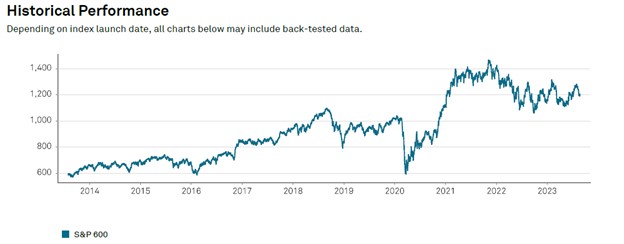In the ever-evolving world of finance, savvy investors are constantly on the lookout for the next big opportunity. As we navigate through 2024, a compelling narrative is unfolding in the realm of small cap and growth companies. These often-overlooked segments of the market are suddenly finding themselves in the spotlight, offering potentially lucrative prospects for those willing to look beyond the usual mega-cap darlings.
The recent surge in small cap stocks, as evidenced by the impressive performance of the Russell 2000 index, has caught the attention of both retail and institutional investors. This shift comes at a time when the market is reassessing its stance on interest rates, inflation, and the broader economic recovery. But what’s driving this renewed interest, and more importantly, what opportunities does it present?
First and foremost, the anticipation of interest rate cuts has breathed new life into small cap stocks. These companies, typically more sensitive to economic cycles, stand to benefit significantly from a more accommodative monetary policy. Lower interest rates can reduce borrowing costs, potentially boosting profitability and fueling growth initiatives. This environment could prove particularly advantageous for small cap growth companies, which often rely on access to capital to fund their expansion plans.
Moreover, as the economy continues to recover and diversify post-pandemic, small caps are well-positioned to capitalize on emerging trends and niche markets. Unlike their larger counterparts, these agile companies can quickly adapt to changing consumer preferences and technological advancements. From innovative healthcare solutions to cutting-edge clean energy technologies, small cap growth companies are often at the forefront of transformative industries.
The potential for outsize returns is another compelling factor drawing investors to this space. Historically, small caps have demonstrated the ability to generate significant returns, especially during periods of economic expansion. While past performance doesn’t guarantee future results, the current market conditions and economic indicators suggest a favorable environment for small cap outperformance.
However, it’s crucial to approach this opportunity with a discerning eye. Not all small caps are created equal, and thorough due diligence is essential. Investors should focus on companies with strong fundamentals, solid balance sheets, and clear paths to profitability. In the growth segment, particular attention should be paid to addressable market size, competitive advantages, and the quality of management teams.
Sector-specific opportunities also abound within the small cap and growth universe. For instance, the ongoing digital transformation across industries presents numerous opportunities in technology and software. Similarly, the push towards sustainable practices is opening doors for innovative companies in renewable energy, recycling, and eco-friendly consumer goods.
Another intriguing aspect is the potential for mergers and acquisitions activity. As larger companies look to innovate and expand, well-positioned small caps could become attractive takeover targets, potentially leading to premium valuations for shareholders.
It’s worth noting that investing in small caps and growth companies comes with its own set of risks. These stocks can be more volatile than their large-cap counterparts and may be less liquid. Additionally, company-specific risks are often more pronounced in smaller firms. Therefore, diversification and a long-term investment horizon are crucial when exploring this space.
For those looking to gain exposure to this exciting segment, various approaches are available. Direct investment in individual stocks offers the potential for significant returns but requires extensive research and risk management. Alternatively, exchange-traded funds (ETFs) and mutual funds focused on small cap and growth companies provide a more diversified approach, spreading risk across a basket of stocks.
As we look ahead, the renewed interest in small cap and growth companies appears to be more than just a fleeting trend. With favorable macroeconomic conditions, the potential for innovation-driven growth, and the possibility of sector-specific tailwinds, this segment of the market offers compelling opportunities for discerning investors.
In conclusion, while the allure of high-flying tech giants and blue-chip stalwarts remains strong, the current market dynamics suggest that it might be time to think small for potentially big returns. As always in investing, thorough research, careful consideration of risk tolerance, and a balanced approach are key to navigating this exciting but complex landscape.









